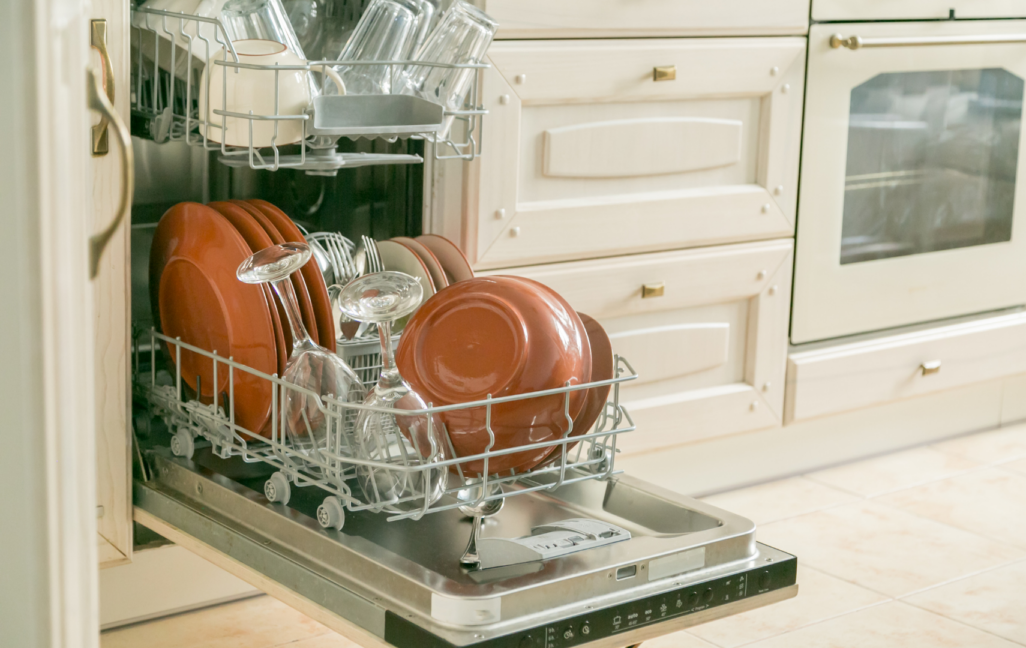Household appliances have become an indispensable part of our everyday lives. How long these practical little helpers remain fully functional and require no replacement rely not least on how well we look after them. By using them correctly, you not only keep more money in your pocket, you also spare the environment of unnecessary electronic waste. klimaaktiv Haushalte has practical tips for you on how you can extend the life of your kitchen appliances without a lot of effort.
Dishwasher
You can avoid damage to your dishwasher with a couple of easy tweaks:
- Clean the dishwasher’s filter – weekly, if possible.
- Use dishwasher salt to remove grey deposits.
- Descale your machine regularly.
The problems/defects you can fix yourself:
- The dishwasher no longer pumps out the water: There may be a foreign object in the drain filter. Cleaning the filter should pump the water out again properly. If this is not the case, the pump could be defective.
- The dishwasher no longer cleans to your complete satisfaction: If necessary, clean the spray arms and the filter to remove any deposits.
Refrigerator
The lifespan of refrigerators can also be significantly extended with correct use:
- Regular defrosting conserves valuable energy and prevents water from accumulating inside the refrigerator, which can leak out and thus seriously affect the functionality of the appliance.
- Clean the condenser coils and fans once per year. Condenser coils collect dust and dirt, which can affect the performance of the refrigerator. The coils can be easily cleaned with a vacuum cleaner or a brush.
The electricity consumption for refrigerators and freezers in the home is a considerable amount, averaging 10% to 15%. Make sure the door is tightly closed, otherwise cold air will escape and the appliance will need more energy to maintain the set temperature. For this reason, you should clean and check the seal for cracks and damage on a regular basis.
Coffee machine
Only a small effort is required to ensure the use of your coffee machine for as long as possible:
- Remove the brewing liquid regularly to avoid mould.
- Only refill coffee beans when the water tank is on the coffee machine, otherwise parts of the beans can get into the water circuit.
The problems/defects you can fix yourself:
- The coffee beans are no longer ground properly: A possible cause could be a small foreign object that has become jammed. The machine can often be cleaned with a vacuum cleaner.
- Coffee machines also require the proper care, of course: Fully automatic cleaning and rinsing programs are convenient and quite helpful, but you should also clean the central unit inside on a regular basis. Since removing and reinstalling the brewing group is not simple on every appliance, be sure to attempt it in the shop prior to purchasing.
But what if a defect occurs, despite every precaution? Before you purchase a new appliance, always consider a repair, for repairing is often cheaper than replacing.
With the Austria-wide repair bonus, there are a number of reasons it is worthwhile not to bin defective electrical appliances straight away: in most cases, end users only pay half of the actual costs for a repair. To do this, submit your repair invoices to reparaturbonus.at.










